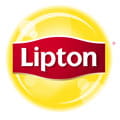Dietary Fats

Fat gets a bad rap even though it is a nutrient we need in our diets. The big concern is making sure we don’t have too much fat. Learn all about dietary fats and how getting too much or too little affects our health.
Does my body need fats?
Yes, it does. Dietary fats are essential to give your body energy and to support cell function. Dietary fats also help your body absorb some nutrients and materials of important hormones.
How many different kinds of fats are there?
There are four major dietary fats in food:
The four types have different chemical structures and physical properties. The saturated and trans fats tend to be more solid at room temperature (such as butter). Monounsaturated and polyunsaturated fats tend to be more liquid (such as canola oil).
Fats can also have different effects on the cholesterol levels in your body. A diet high in saturated fats and trans fats raises bad cholesterol (LDL) levels in your blood, increasing the risk of cardiovascular disease. A healthy dietary pattern higher in monounsaturated and polyunsaturated fats can lower bad cholesterol levels.
Do all fats have the same number of calories?
There are 9 calories in every gram of fat, regardless of what type of fat it is. Fats are more energy-dense than carbohydrates and proteins, which provide 4 calories per gram.
Consuming high levels of calories – regardless of the source – can lead to weight gain or being overweight. Consuming high levels of saturated or trans fats can also lead to heart disease and stroke. Health professionals generally recommend replacing saturated fats and trans fats with monounsaturated fats and polyunsaturated fats while still maintaining a nutritionally-balanced diet.
Are all foods labeled “trans fat-free” healthy foods?
Not necessarily. Foods labeled “0 trans fat” or cooked with “trans fat-free” oils may contain a lot of saturated fats, which raise your bad cholesterol levels. “Trans fat-free” foods may also be unhealthy in terms of their general nutrient content. For example, even if they lack trans fats, baked goods may be high in added sugars and low in nutrients. Read the Nutrition Facts, if available, or the ingredient list to understand the big picture.
Can fats be part of a healthy diet?
Eating foods with fat is definitely part of a healthy diet. To choose healthier fats that are high in polyunsaturated fat and monounsaturated fat, use:
- Liquid non-tropical plant oils (canola, soybean, corn, safflower, sunflower and nut oils) instead of saturated fats (butter, coconut and palm oils)
- Low-fat or fat-free instead of full-fat dairy
- Lean meat or skinless poultry, if you eat meat
Remember to balance the amount of calories you eat from all foods with the amount of calories you use through physical activity.
Does eating healthier mean giving up my favorite foods?
A healthy diet can include the foods you love. Balance your portions and choices to emphasize a healthy overall way of eating.








